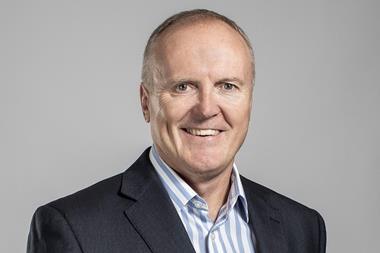Broker chief exec says the industry has ‘seen the best and the worst in the market over the past 12 months’
Brokers need to have better access to underwriters, ideally in a visible office setting, if they are to successfully navigate today’s challenging market conditions, said Brett Sainty, chief executive of broker BLW Insurance Brokers.
Speaking at a virtual event organised by the Managing General Agents’ Association (MGAA), Sainty said the performance from insurers had been mixed over the past year.
“Communication is vital in the current market and has been in the past 12 months during the Covid pandemic. If an underwriter wants to come off a risk, they need to contact the broker quickly to communicate the decision and make that decision early to provide the time for the broker to look for alternative solutions for their clients,” he explained.
“I have seen the best and the worst in the market over the past 12 months.
“We have seen amazing support from insurers and MGAs [that] have made their underwriters available for brokers quickly when needed.
“On the less positive side of the market, we are hearing stories of insurers saying that it has all worked so incredibly well, that we will close our offices and let our underwriters work from home.
“It has not worked incredibly well from the broker’s point of view. We need to see underwriters and have access to them. My view is they need to be in an office, where that access can be provided.”
Ryan Birbeck, head of London market trading at AXA, added that insurers have to work succinctly with their MGAs and brokers in order to access their market intelligence on the issues facing the end client, to enable them to better react to their needs.
“It is an area where brokers can really add value,” he said.
Sainty added that the key here would be to get the industry’s expertise in the right place when it was needed.
“It remains a case of making people available,” he explained. “Insurers need to be visible and available for brokers to have detailed discussions with them.
“We have reputational issues to tackle and the way to recover from them, and I believe we will, is to have technically gifted underwriters available. Communication will be key.”

SME opportunities
Birbeck said the wider insurance sector – as well as AXA itself - had done what it could to support SMEs and other commercial customers throughout the Covid crisis.
“We still see the SME market as an area of opportunity going forward,” he said. “We have sought to maintain capacity for the sector and tried to stay supportive.”
Birbeck added that AXA had offered payment holidays for its clients in an effort to ease the pressure on cash flows during a time when many businesses were forced to close premises.
“We saw many millions of pounds in delayed payments and while this heightened the risk of bad debt, we believe that it was necessary to support policyholders,” he added.
“SMEs are central to our business and we, like many other insurers, looked to ensure there were no additional charges made around empty properties during the pandemic restrictions.”

When asked about the steps that had been taken to support SMEs during the pandemic and beyond, Sainty said MGAs have an important role to play.
He explained: “Ultimately we need to pause and remember what the essence of insurance is.
“Our role is to transfer risks off our clients’ balance sheets so they can then go and build the business.
“MGAs have a significant role to play as we see many package products offered by the composites. MGAs have the knowledge base and can provide a greater degree of choice in shaping products.”
Hard market predictions
As part of the discussion, the panel were asked to identify the drivers of the hard market and how long they believed it would last.
Janthana Kaenprakhamroy, chief executive of MGA Tapoly, said Covid-19 and Brexit had played a part – however, she added that data sharing is also key.
“One of major drivers remained the continued culture in the insurance industry to retain [its] own data, which makes the ability for firms to benchmark their performance and understand their risks harder,” she explained.
Likening the hard market to the credit crunch, Kaenprakhamroy said the hard market was likely to continue for five years as the industry wrestled with its problems over profitability.
Birbeck added that having been in the insurance industry for 15 years, he had only ever worked in an environment where pricing competition was present.
He said it was likely there would be a phased easing of the hard market, with financial lines and casualty risks set to remain extremely challenging, while SME risks will see hardening conditions remain tough for 18 to 24 months.
Sainty, on the other hand, believes that Solvency II and the changes to the Ogden rules had increased costs and underwriters simply had to make a profit.
As such, he does not see hard market conditions easing in the next two years.
Hosted by comedian and actor Tom Allen, 34 Gold, 23 Silver and 22 Bronze awards were handed out across an amazing 34 categories recognising brilliance and innovation right across the breadth of UK general insurance.





















































No comments yet